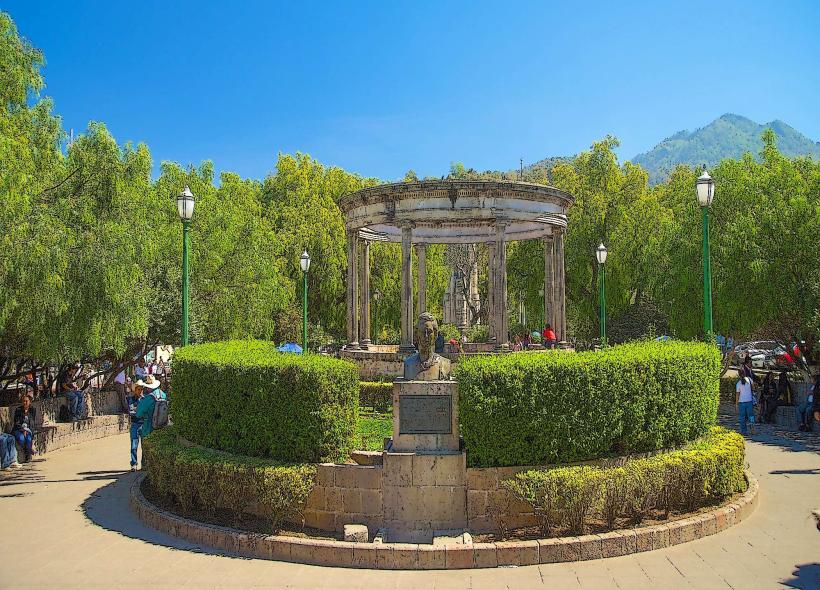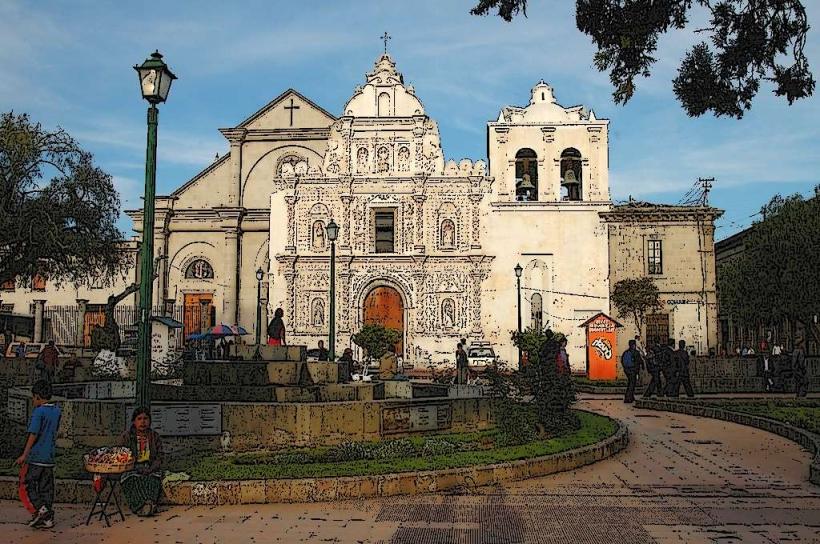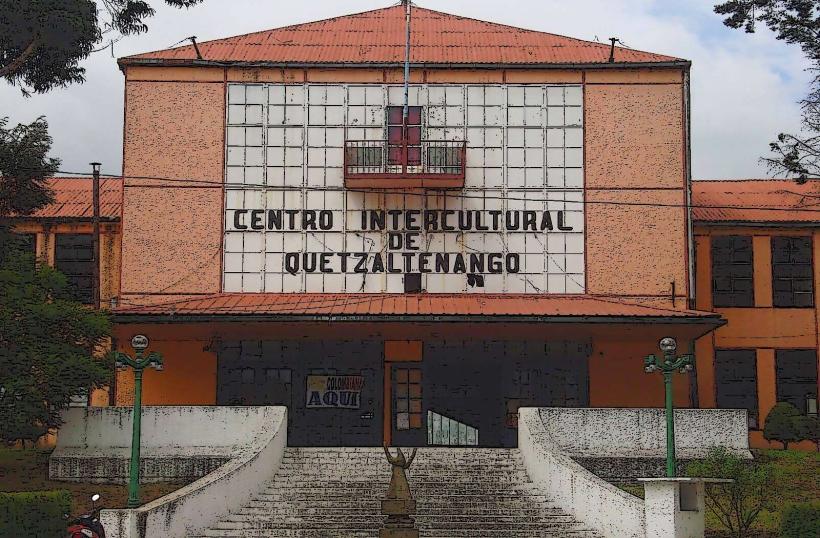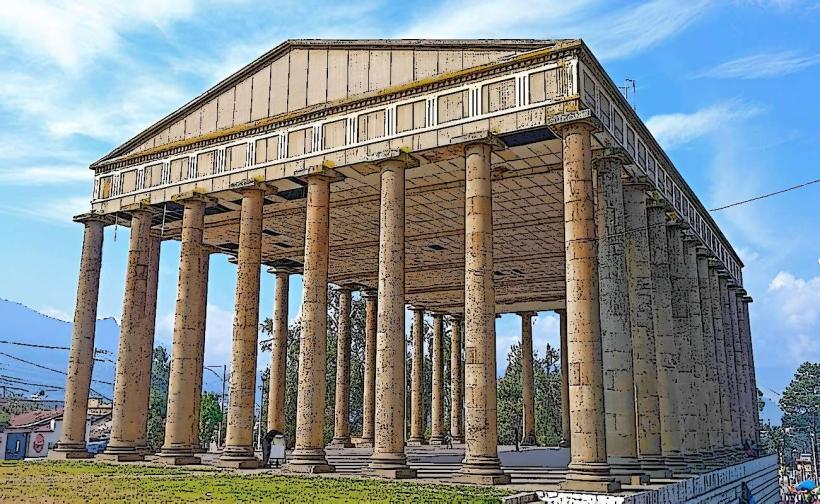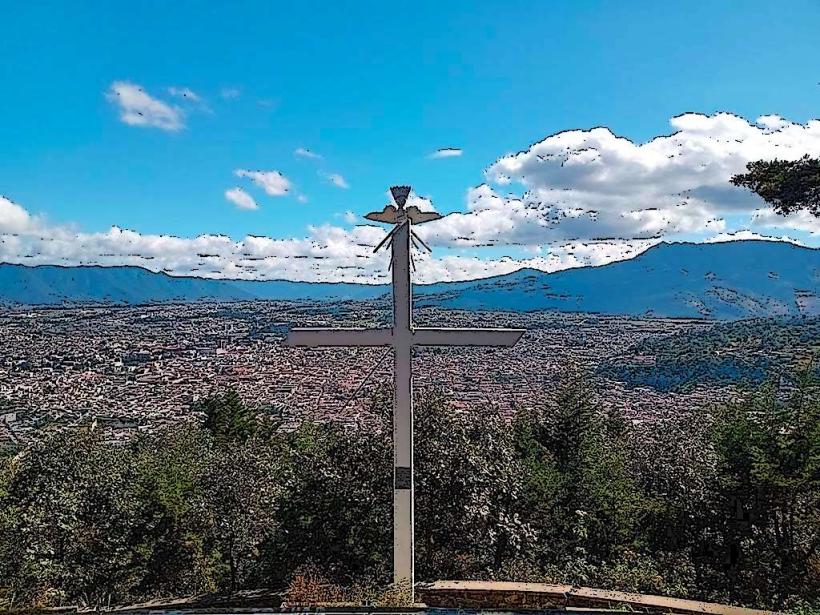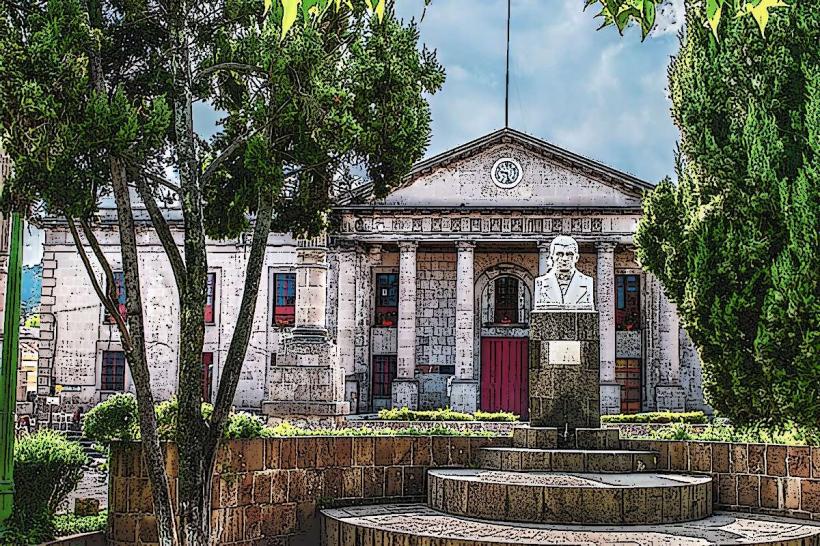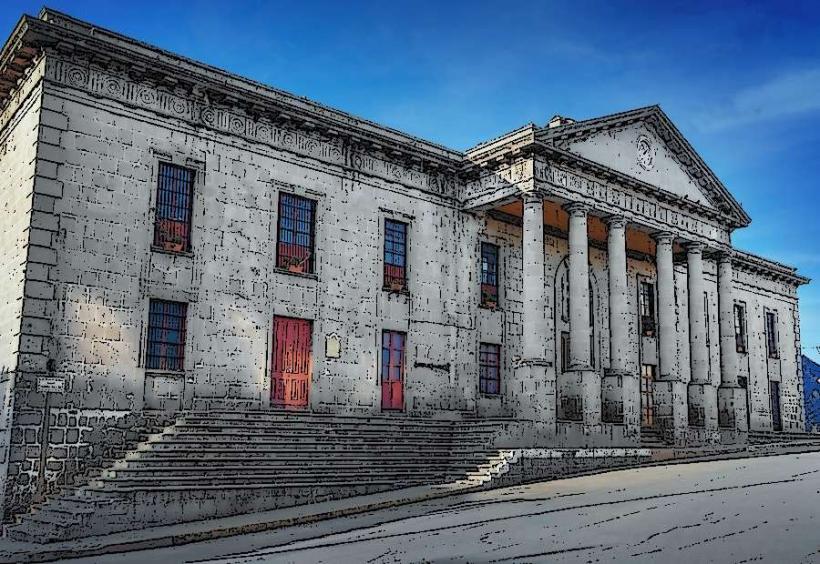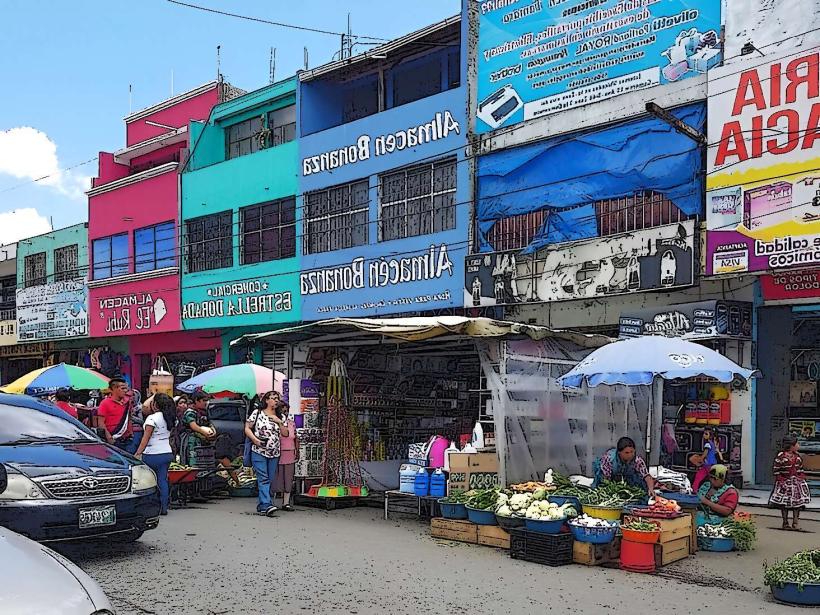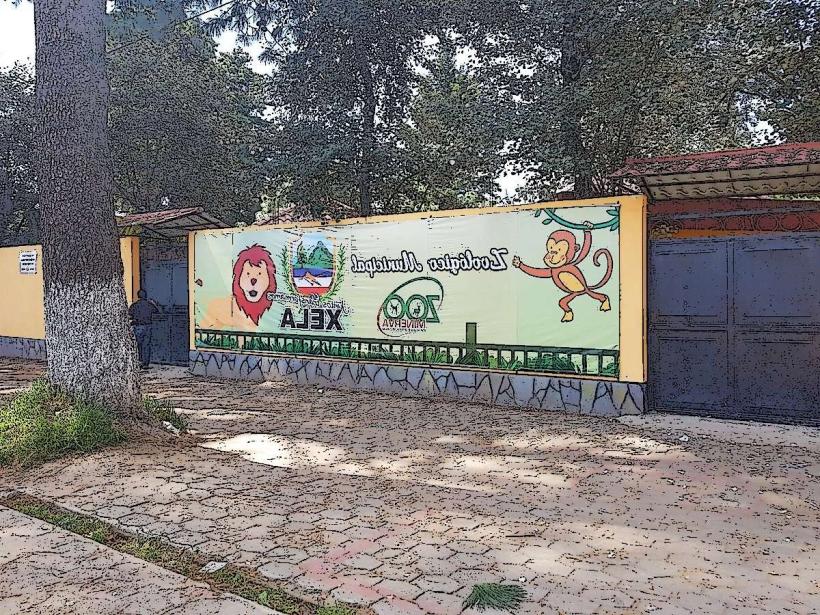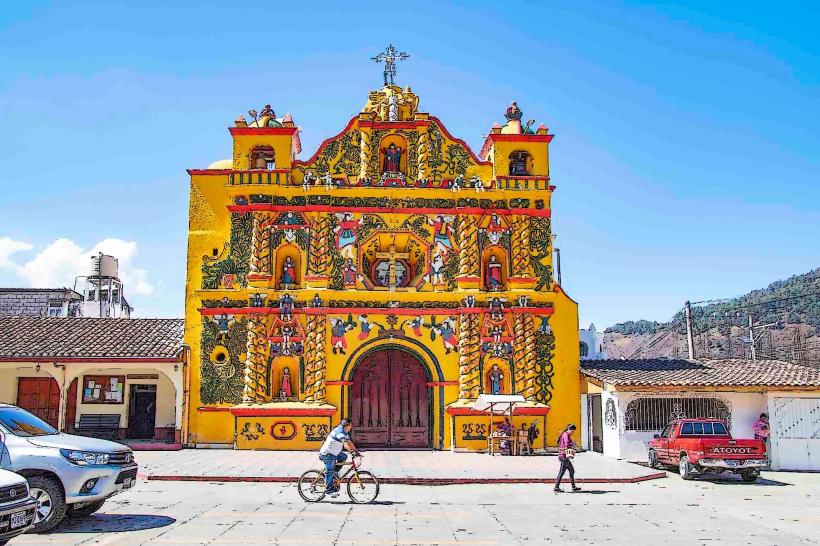Information
City: QuetzaltenangoCountry: Guatemala
Continent: North America
Quetzaltenango, Guatemala, North America
Overview
Quetzaltenango-locals call it Xela, pronounced “Sheh-lah”-is Guatemala’s second-largest city, nestled high in the cool, green western highlands, not only that it’s the capital of the Quetzaltenango Department, a area steeped in history and alive with cultural traditions, all framed by mountains that rise sharp against the sky.Ringed by towering volcanoes and rugged mountains, the city blends cobblestone streets lined with colonial buildings, the vibrant rhythms of indigenous life, and the sleek edges of modern growth, consequently quetzaltenango sits about 2,300 meters (7,500 feet) above sea level, where the air feels crisp and the weather stays cool and mild year-round.The city sits in the shadow of Volcán Tajumulco-the tallest in Central America-and the looming Volcán Santa María, with other rugged peaks scattered along the horizon, likewise the land rolls through deep valleys, rises into rugged mountains, and settles under the shade of dense forests.Year-round, the climate stays mild, with average temperatures between 12°C and 20°C (54°F to 68°F), cooler and more comfortable than the warmer lowlands of Guatemala, then from May to October, the rainy season brings frequent afternoon showers that leave streets glistening, relatively November through April turns dry, warm, and radiant under a steady sun, as a result quetzaltenango’s story stretches back to pre-Columbian days, when it thrived as a bustling heart of the K'iche' Maya, its markets filled with the scent of fresh maize and the sound of barter.Quetzaltenango means “site of the Quetzal,” named for the brilliant green-and-red bird that glides through Guatemala’s highland forests, meanwhile when the Spanish arrived in the 16th century, they renamed the city Xelajú, adapting its original K’iche’ name, and it grew into a bustling colonial center with cobbled streets and whitewashed walls.The city was central to the fight for independence from Spain, and for a short time in the 19th century, it even served as Guatemala’s capital, its streets buzzing with the sound of horse-drawn carts and hurried footsteps, likewise in the late 1800s and early 1900s, Quetzaltenango grew quickly as novel roads appeared, schools opened their doors, and factories buzzed to life.Today, the city still holds on to its rich history, while bustling markets and lively festivals keep it thriving as the cultural and commercial heart of the western highlands, furthermore the city’s layout blends stately colonial-era buildings with sleek, glass-fronted towers that catch the afternoon light.In the heart of Quetzaltenango lies the Plaza Central, framed by landmarks like the white-stone Catedral del Espíritu Santo and the stately Palacio Municipal, each a showcase of colonial architecture, at the same time in the past few years, the city’s pushed far beyond its timeworn limits, sprouting current suburbs and busy shopping strips where fields once stood.Even with its recent growth, Quetzaltenango has held on to its traditional character, with neighborhoods where weathered stone walls and uneven cobblestone streets still catch the morning light, meanwhile the city’s infrastructure has grown, with smoother roads, faster internet, and more reliable public services, sort of Like many expeditious-growing cities, it’s wrestling with the side effects of urban growth-traffic that crawls at rush hour and a haze that hangs in the air, then economyQuetzaltenango bustles as a key hub for trade and business in Guatemala’s western highlands, where market stalls overflow with fresh corn and radiant textiles.Quetzaltenango’s economy runs on a handful of vital sectors, and in the rich, shadowy soil around the city, farms yield coffee, sweet corn, crisp vegetables, and more, not only that coffee plays a gigantic role here, with hillsides dotted by rows of plants that yield beans prized for their rich flavor.Quetzaltenango’s growing industrial sector turns out textiles, processed foods, and other manufactured goods, while you’ll find plenty of tiny factories and workshops scattered through the city and tucked into its outskirts.As the region’s hub, Quetzaltenango hums with a strong, busy commercial scene, on top of that quetzaltenango buzzes with local markets, tiny shops, and an increasing mix of businesses serving both locals and visitors.Believe it or not, It may not draw the same tourist crowds as Antigua or Guatemala City, but it’s a must for anyone eager to explore the cool, misty highlands of Guatemala, to boot visitors come for the city’s colonial facades, the deep blue shimmer of Lake Atitlán, and the volcanic peaks that ring the horizon-especially hikers, history buffs, and those drawn to indigenous traditions.Quetzaltenango, home to about 250,000 people, blends many cultures into its daily rhythm, simultaneously most people here are K’iche’ Maya, and you’ll often hear them switch easily between K’iche’ and Spanish in the market.The city bustles as a cultural heart for the K'iche' and other indigenous communities, where you might hear marimba music drifting through the market air, therefore you can discover the city’s indigenous roots in everyday life-dazzling woven shawls in the market, the lilting sound of native languages, and customs that shape how people gather and celebrate.I think, In Quetzaltenango, festivals, street markets, and lively gatherings brim with indigenous influence, where neighbors might light candles for a Maya ritual one day and join a Catholic procession the next, in turn quetzaltenango bursts with culture, from intimate theaters and quiet museums to shining art galleries where you can observe both bold modern pieces and intricate traditional Guatemalan works.The Teatro Municipal hosts music and live performances in the heart of the city, while the Centro Cultural Casa de la Cultura showcases art exhibits and bustling cultural events, then in Quetzaltenango, visitors can explore a wide mix of attractions, from bustling markets scented with fresh tortillas to quiet plazas shaded by antique stone buildings.Interestingly, Among the standouts is Volcán Tajumulco, the tallest peak in Central America, where a steep, winding trail leads hikers to breathtaking views above the clouds, simultaneously from the summit, you can gaze across rolling highlands that seem to stretch forever.About ninety minutes away lies Lake Atitlán, a shimmering expanse ringed by volcanoes and colorful villages, on top of that in the heart of Quetzaltenango, Parque Central offers shady benches beneath timeworn stone facades and the scent of fresh coffee drifting from nearby cafés.It’s the perfect spot to unwind and breathe in the city’s buzz, with the Catedral del Espíritu Santo rising over the central plaza in stately colonial style and the Museo Ixkik’ offering a vivid glimpse into the K'iche' Maya’s past; from here, buses and shuttles can whisk you to nearly anywhere in Guatemala, simultaneously the city sits at a key crossroads, where buses rumble through carrying travelers bound for the western highlands or the Guatemalan border with Mexico.You can reach Quetzaltenango by car or bus, with highways linking it to Guatemala City, Lake Atitlán, and other major hubs, simultaneously buses and shuttles run through the city and nearby towns, though rush-hour traffic can leisurely the ride.The Aeropuerto Internacional de Quetzaltenango, a petite but busy airport, offers flights to and from other parts of Central America, likewise while the city is mostly guarded for both locals and visitors, a few neighborhoods may glimpse occasional crime, much like in any large urban area, roughly It’s best to keep your voice low, like a whisper in a quiet library.
Author: Tourist Landmarks
Date: 2025-10-29
Landmarks in quetzaltenango

